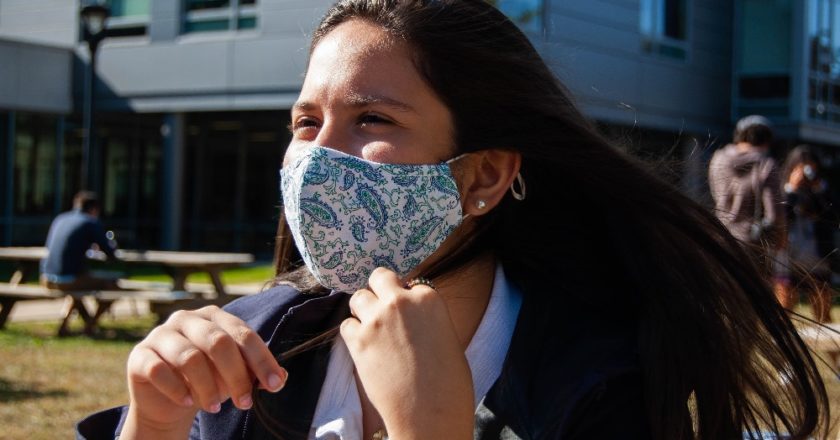Note: As of 10.30, this update is no longer the most relevant information about our school’s situation.
Everyone is familiar with COVID-19, the virus that sent the world into lockdown this past spring. The virus is primarily airborne— meaning it is transmitted when people sneeze, cough, or even talk to one another— which is why there is an ever-increasing demand for masks and tests. Each country is handling this global pandemic differently, and now, Germantown Academy, in addition to other schools in the area, has done their best to enable students to safely return to school in-person.
So far, GA has randomly tested 500 faculty, staff, and students, and all have come back negative. All students must submit a daily health check and stay home if they are exhibiting two or more symptoms of COVID-19. In addition, lower and middle school students get temperature checks daily, and in the Upper School, there are random in-class temperature checks. There have also been numerous additions to GA’s staff to continually keep high-contact surfaces clean and help maintain physical distancing. Head of School Mr. Schellhas recently extended the Upper School hybrid model, in part because of how difficult it has been for students to stay six feet apart when in hallways, stairwells, and between classes.
Student and faculty responses to COVID-safe lunch have been pretty positive, though the biggest complaint they have is that due to the new schedule, there is no morning break, and our lunch period is much shorter than it used to be. The Student Government Association is currently working on a proposal that would lengthen lunch, but it has not gone through yet.
Similarly, according to The Philadelphia Inquirer, other private schools in Southeastern Pennsylvania and New Jersey have maintained low COVID rates after a return to school. A majority of schools in the greater Philadelphia area are either completely virtual or are hybrid with a virtual option. The lessened capacity rates help limit contact and potential transmissions between people on campuses.
Coronavirus rates at universities and colleges nearby, however, are rapidly rising; young adults aged 19-24 make up 70% of Southeastern PA’s new cases, and as of September, they account for over 20% of cases nationwide. There is a 6% positivity rate among young adults – the highest of all age brackets. These young adults impact the counties they are located in, forcing communities into continued shutdowns with devastating economic effects. The rising rates could be a result of end-of-summer gatherings and parties prior to the start of the school year, or it could just be the sheer number of students on any given college campus. Penn State, for example, reported 275 new cases within a week of its opening earlier this September – many of which occurred at its flagship campus. All in all, Pennsylvania has been able to maintain mostly low coronavirus rates since its initial spike in April, and it is the hope that soon enough, we can see return to normalcy.
Sources:
- https://www.inquirer.com/health/coronavirus/coronavirus-covid-19-pa-nj-philly-rising-cases-delaware-fall-college-20201006.html
- https://www.nbcphiladelphia.com/news/coronavirus/schooling-in-a-pandemic/pa-school-districts-now-have-community-spread-rating-to-weigh-how-to-reopen/2497030/
- https://www.cdc.gov/mmwr/volumes/69/wr/mm6939e1.htm
- https://www.health.pa.gov/topics/disease/coronavirus/pages/cases.aspx

